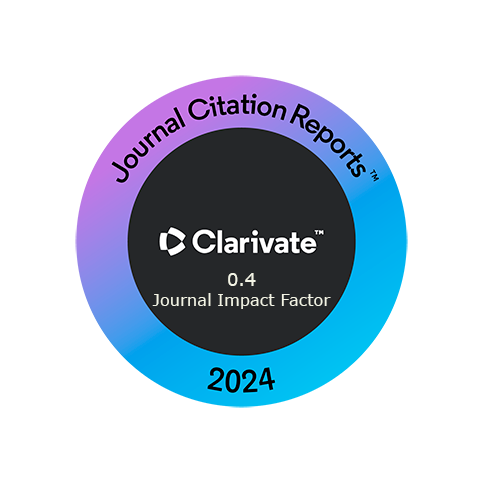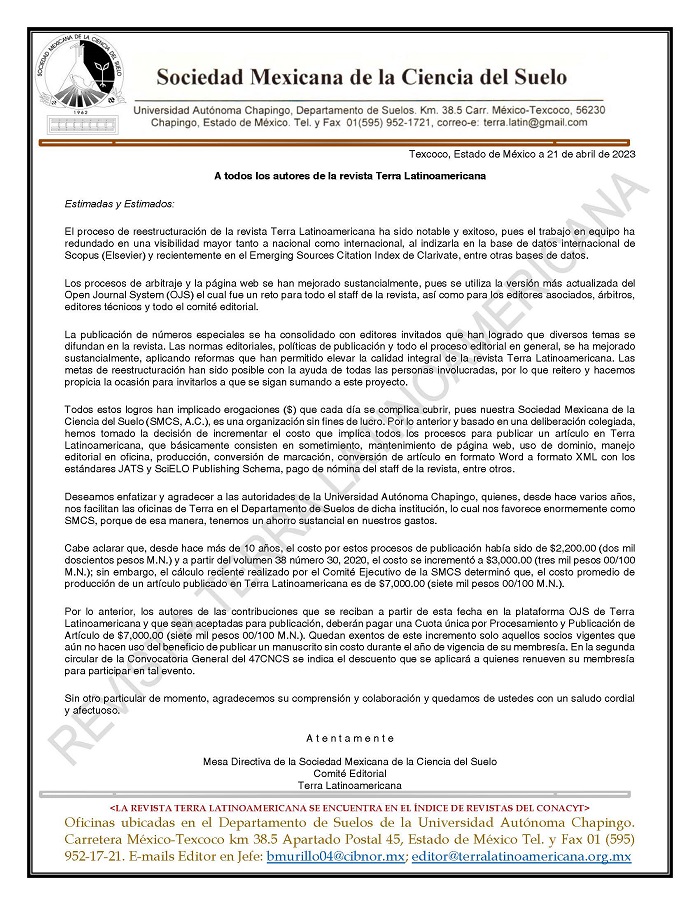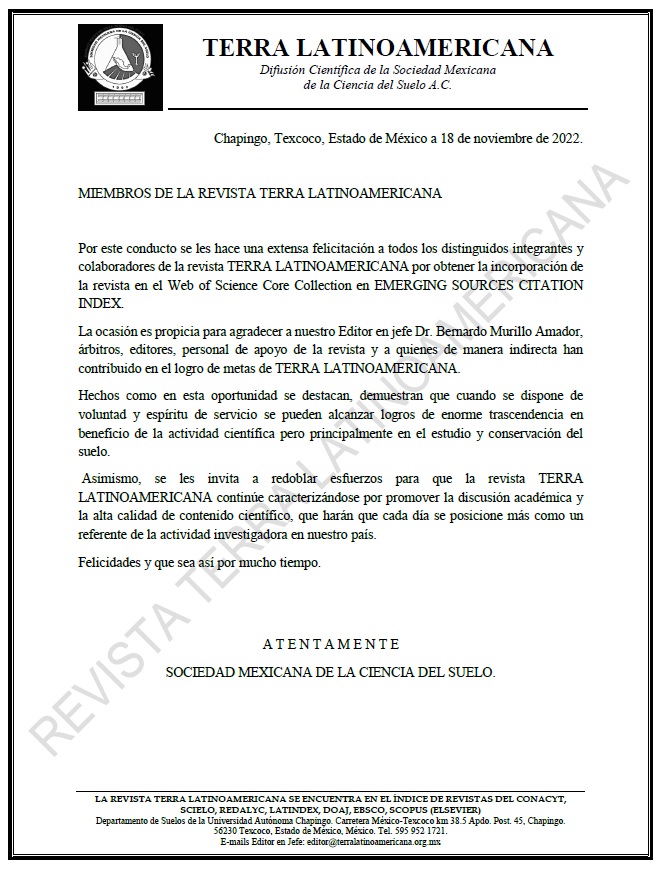Parameters controlling deep percolation in a wheat crop
DOI:
https://doi.org/10.28940/terra.v37i1.345Keywords:
evapotranspiration, root depth, rechargeAbstract
To evaluate the water percolation in the soil, the water balance method is common. This method requires different daily data, which are often incomplete or not verified in field, in addition to some uncertainty regarding crop evapotranspiration. In this research, the parameters that control deep percolation were identified, based on estimation of daily local water balances with different crop coefficients, using data from weather stations and edaphic parameters. At the study site, constant monitoring of the phenological stages of a wheat crop (temporal) was carried out, and monthly soil sampling was performed for one year at different points within the site. At the same time, data were collected from weather stations, evaporation was measured with the evaporimeter tank, evapotranspiration of the crop was estimated for a single coefficient, dual and adjusted for stress based on the FAO manual, and deep percolation was determined from these data. When the soil surface was saturated or supersaturated, evapotranspiration of the crop was negligible. In addition, maximum vertical plant growth was 1.02 m, and root depth was 0.35 m. Daily rainfall greater than 10 mm or cumulative of three consecutive days greater than 18 mm of rainfall led to deep percolation, but this decreased to almost drip as thickness of the root zone increased from 0.30 m to 0.52 m. Crop growth, root zone thickness and incidence of precipitation on the soil surface controlled deep percolation. The values obtained allow us to more closely approximate the actual value groundwater recharge.Downloads
Publication Facts
Reviewer profiles N/A
Author statements
- Academic society
- Terra Latinoamericana
- Publisher
- Mexican Society of Soil Science, C.A.

















